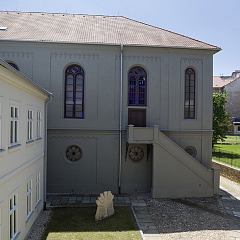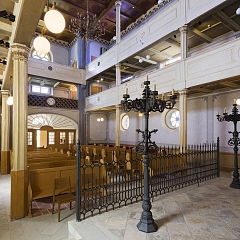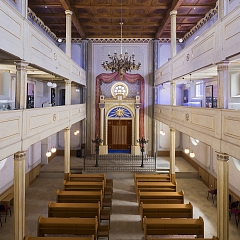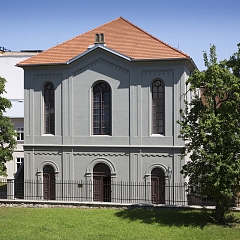
-
Plzeň
The Old Synagogue
Plzeň’s Old Synagogue was built in 1859 in the gardens of the Jewish municipal house according to a plan by Martin Stelzer. The neo-Romanesque building has an auxiliary outer staircase to the upper floor that acts as an emergency exit. The main hall features a two-story women’s gallery on wooden pillars. The decoration of the wooden Torah ark was restored during the building’s renovation in 2010–2014. The ceiling features illusionary painting. In 1869, the synagogue was fitted with an organ, which has not survived. Following construction of the Great Synagogue on Klatovy Avenue (1892), the Old Synagogue was used only for occasional events. Today, it is an actively consecrated synagogue. In 1875, the Auxiliary Synagogue was erected immediately adjoining the Old Synagogue. The two buildings were joined by a stone staircase leading to the galleries. In the 20th century, the Auxiliary Synagogue was used as a storehouse. Today, only its outer walls remain; these were repaired and the building’s interior converted into a monument to Plzeň’s victims of the Holocaust – a garden with the victims’ names written on stones. Total expenditures on renovating the Old Synagogue as part of the “Revitalization of Jewish Monuments” project amounted to CZK 31,939,000.




